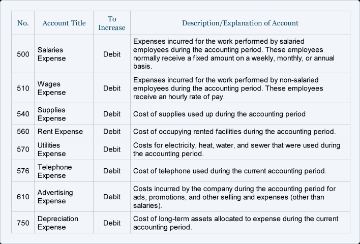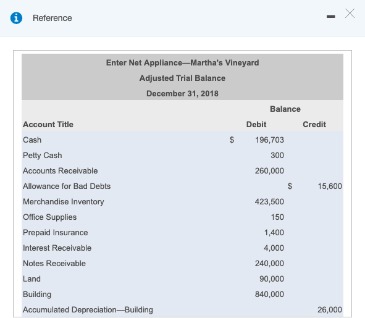
To stay ahead of the game, larger financial institutions are investing heavily, with 77% planning to increase their budgets over the next three years, according to Scale’s 2023 AI Readiness report. All of the companies that trade on U.S. stock markets have many data points that investors can use to determine what stocks they want to buy or sell. Artificial intelligence allows investors to efficiently sort through this data to identify stocks that meet their criteria. If you’re looking to get started with a stock screener, consider learning how to use these platforms by starting with one of the many free versions that are available, like ZACKS (NASDAQ).
Sentiment analysis
What’s more, according to another survey, 73% of consumers are willing to share their personal data with banks in exchange for customized offers. In this paragraph, we shortly illustrate some relevant characteristics of our sub-sample made up of 110 studies, including country and industry coverage, method and underpinning theoretical background. Table 2 comprises the list of countries under scrutiny, and, for each of them, a list of papers that perform their analysis on that country.
How do financial institutions use AI?
McKinsey also estimates that AI can deliver up to $1 trillion in value to global banks annually. This significant impact is due to the complexity of financial transactions, enormous amounts of proprietary and third-party data, increasing fraudulent activity, and the large number of customers financial institutions service. If you are a hands-on, active investor, you will be using AI in more than one way to manage your portfolio, make decisions on purchases and sales, and manage trading positions, so it is important to understand and keep abreast of developments in the AI and investing space. Investors should, therefore, look at the various investing tools that use AI on their existing platform to ensure that they are sufficient for their needs. If not, investors may want to consider either a different broker with more robust AI investing tools, or supplementing their broker platform with third-party AI investing software; an example would be using a separate stock screener for choosing stocks.

A potential McDonald’s replacement
SoundHound is a potential logical choice as a replacement for IBM, as the company has gained a lot of traction in the restaurant space with its AI-powered drive-thru voice ordering technology and other industry-specific applications. Even if you are not directly using AI yourself, portfolio and fund managers all utilize AI in multiple ways, and your investment advisor is likely also using the same tools robo-advisors use to help determine risk tolerances and the best portfolio for their clients. For those making their own investment decisions, stocks screeners would likely be helpful AI tools when choosing the individual stocks for your portfolio. Stock screeners often have pre-set screens to help get the user started in filtering for stocks to consider. The advent of ERP systems allowed companies to centralize and standardize their financial functions. Early automation was rule-based, meaning as a transaction occurred or input was entered, it could be subject to a series of rules for handling.

AI and portfolio management
- Generative AI might start by producing concise and coherent summaries of text (e.g., meeting minutes), converting existing content to new modes (e.g., text to visual charts), or generating impact analyses from, say, new regulations.
- Open access funding provided by Università Politecnica delle Marche within the CRUI-CARE Agreement.
- The virtual assistants have underlying use of natural language processing (NLP) capabilities, which can deal with complex financial questions.
In this regard, Kim and Kim (2020) suggest focussing on optimising AI algorithms to boost index-tracking performance. Soleymani and Vasighi (2020) recognise the importance of clustering algorithms in portfolio management and propose a clustering approach powered by a membership function, also known as fuzzy clustering, to further improve the selection of less risky and most profitable assets. For this reason, analysis of asset volatility through deep learning should data sources in financial modeling be embedded in portfolio selection models (Chen and Ge 2021). Kensho, an S&P Global company, created machine learning training and data analytics software that can assess thousands of datasets and documents. Its data training software uses a combination of machine learning, cloud computing and natural language processing, and it can provide easily understandable answers to complex financial questions, as well as extract insights from tables and documents quickly.
Overall, the integration of AI in finance is creating a new era of data-driven decision-making, efficiency, security and customer experience in the financial sector. The platform validates customer identity with facial recognition, screens customers to ensure they are compliant with financial regulations and continuously assesses risk. Additionally, the platform analyzes the identity of existing customers through biometric authentication and monitoring transactions. Its offerings include checking and savings accounts, small business loans, student loan refinancing and credit score insights.

Proactive governance can drive responsible, ethical and transparent AI usage, which is critical as financial institutions handle vast amounts of sensitive data. Shapeshift is a decentralized digital crypto wallet and marketplace that supports more than 750 cryptocurrencies. The platform provides users access to nine different blockchains and eight different wallet types. ShapeShift has also introduced the FOX Token, a new cryptocurrency that features several variable rewards for users. AI and blockchain are both used across nearly all industries — but they work especially well together.
Artificial intelligence is a field of computer science that creates intelligent machines capable of performing cognitive tasks, such as reasoning, learning, taking action and speech recognition, which have been traditionally regarded as human tasks (Frankenfield 2021). AI comprises a broad and rapidly growing number of technologies and fields, and is often regarded as a general-purpose technology, namely a technology that becomes pervasive, improves over time and generates complementary innovation (Bresnahan and Trajtenberg 1995). As a result, it is not surprising that there is no consensus on the way AI is defined (Van Roy et al. 2020). It is safe to use AI, but AI applications for financial markets are only as good as both the quality of the AI application and the ability of the individual to use the application. AI tools for financial markets can be used to identify risky or safe stocks, so the relative safety is a function of the choices the investor makes related to risk and reward of different stocks. Using modern portfolio theory to find a portfolio of stocks that maximizes gains while minimizing risk is another safe tool to use in making investing decisions.
Faulty algorithms, and the potential for moves related to large numbers of investors using the same AI-generated information, are potential risks with using AI for investing. We covered investment research, fraud detection and anti-money laundering, customer-facing process automation, personalized assistants/chatbots, personalized portfolio analysis, exposure modeling, portfolio valuation, and risk modeling. By leveraging large volumes of financial data, including historical market data, company financials, economic indicators, and news sentiment, models can help companies identify patterns, correlations, and trends that impact portfolio valuation. Financial institutions can also integrate alternative data sources such as satellite imagery, social media, and consumer behavior data into portfolio valuation models to enrich the analysis.
Various risk management techniques have been discussed, such as using AI in conjunction with modern portfolio theory and the efficient frontier, and using sophisticated order options to manage risk on active trades. However, AI can also be used to reduce over-exposure to individual stocks in a portfolio (such as when multiple managers all have the same stock in different asset classes in the same portfolio), or to establish automated options strategies to assist with risk management. The last group studies intelligent credit scoring models, with machine learning systems, Adaboost https://www.accountingcoaching.online/rma-postage-refunds/ and random forest delivering the best forecasts for credit rating changes. These models are robust to outliers, missing values and overfitting, and require minimal data intervention (Jones et al. 2015). As an illustration, combining data mining and machine learning, Xu et al. (2019) build a highly sophisticated model that selects the most important predictors and eliminates noisy variables, before performing the task. In this section, we explore the patterns and trends in the literature on AI in Finance in order to obtain a compact but exhaustive account of the state of the art.
The use of AI in finance is gaining traction as organizations realize the advantages of using algorithms to streamline and improve the accuracy of financial tasks. Step through use cases that examine how AI can be used to minimize financial risk, maximize financial returns, optimize venture capital funding by connecting entrepreneurs to the right investors; and more. Second, automated financial close processes enable companies to shift employee activity from manual collection, consolidation, and reporting of data to analysis, strategy, and action. Using our own solutions, Oracle closes its books faster than anyone in the S&P 500—just 10 days or roughly half of the time taken by our competitors.
Experts say the frenzy around AI stocks resembles the last two major market bubbles — and could end in disaster if investors get spooked. SoundHound has struck deals with a number of large quick-service restaurant (QSR) chains, including White Castle, Jersey Mike’s, Five Guys, Noodles & Company, and Chipotle Mexican Grill, along with top restaurant fintech companies such as Toast, Olo, and Square. As such, it is certainly a viable contender to replace IBM as McDonald’s new voice AI-powered ordering technology partner. Artificial Intelligence and quantitative investment techniques are disrupting investment management in unprecedented ways. In the hedge fund industry, 8 of the top 10 largest managers are now quantitatively focused. More and more fundamental managers are announcing their adoption of quantitative and AI techniques.
The results reveal that firms lead by masculine-faced CEO have higher risk and leverage ratios and are more frequent acquirers in MandA operations. Through our analysis, we also detected the key theories and frameworks applied by researchers in the prior literature. As shown in Table 4, 73 (out of 110) papers explicitly refer to some theoretical framework. Finance theories (e.g. Arbitrage Pricing Theory; Black and Scholes 1973) are jointly employed with portfolio management theories (e.g. modern portfolio theory), and the two of them account together for 21% (15) of the total number of papers. Finally, bankruptcy theories support business failure forecasts, whilst other theoretical underpinnings concern mathematical and probability concepts. An AI-powered search engine for the finance industry, AlphaSense serves clients like banks, investment firms and Fortune 500 companies.
Automatically identifying, extracting, and analyzing relevant information from structured and unstructured data sources increases the quantity and relevancy of data that analysts and managers can incorporate into their processes, making them far more efficient and effective. This includes fundamental data, such as a company’s earnings, cash flow, and any other data https://www.business-accounting.net/ that may impact the stock’s price. Artificial intelligence is also used in technical analysis tools, which include data related to the number of shares traded, and other mathematical criteria related to past price activity. Once the portfolio is up and running, investors may want to utilize automated tools to help manage their positions for entry and exit points.
